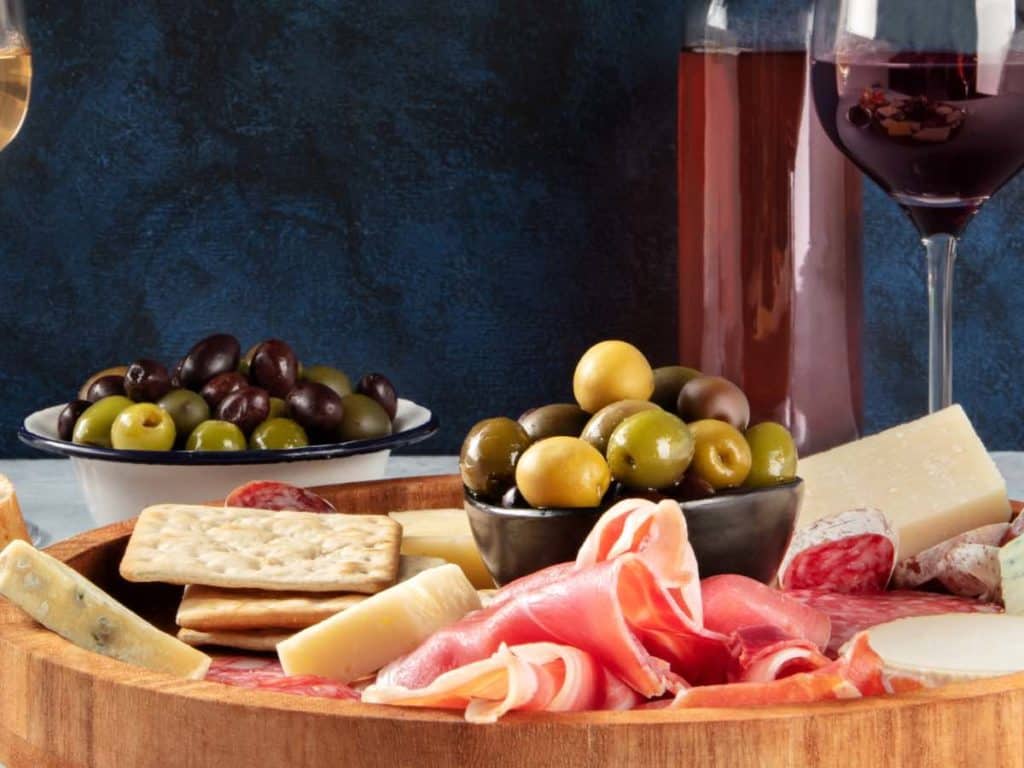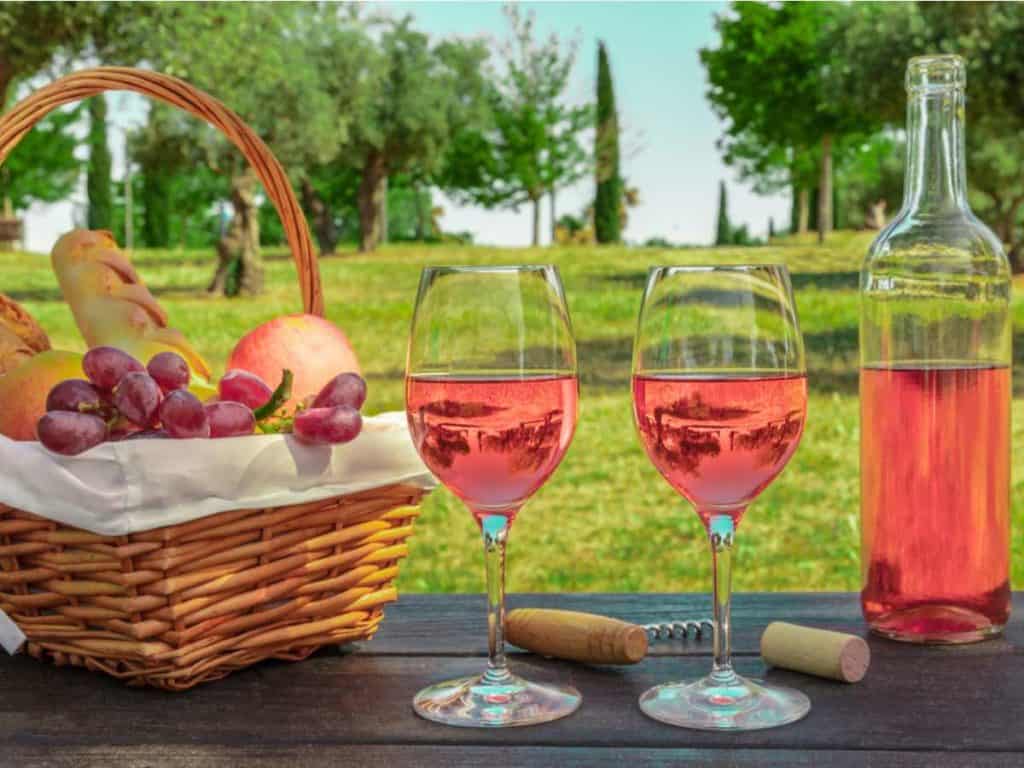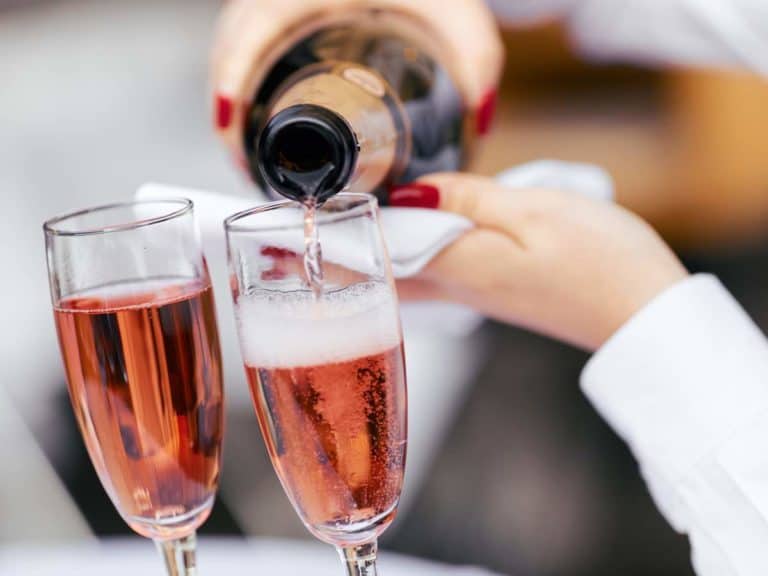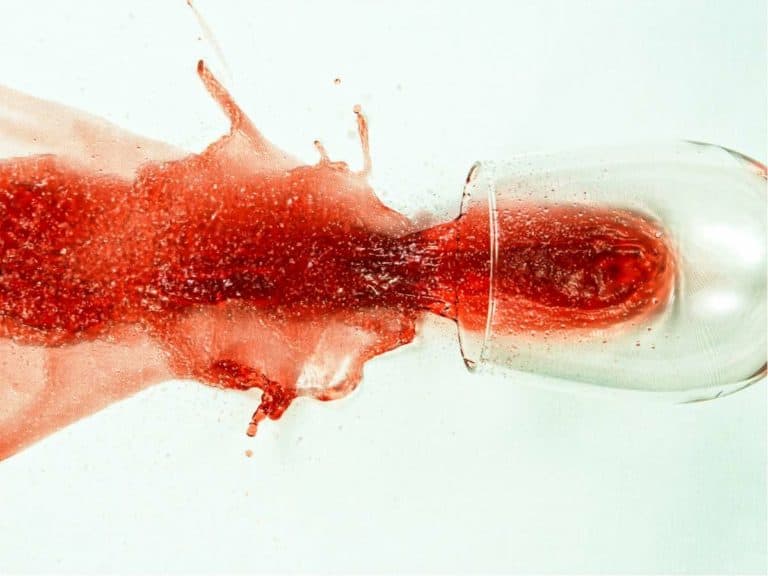What Do Blush Wines Pair Well With
It’s summertime which means you’re going to see blush wines all across the internet and in every restaurant. Whether you’re the chef in one of those restaurants, are hosting guests, or have a case of blush wines and don’t know what to do with them, you’ll want to know how to pair blush wines, and that’s what we’re helping you with today.
Blush wines generally have an ABV value of lower than 13.5%. This makes them light wines, which means you can pair them with a wide range of food items. So there isn’t a lot of room to go wrong when pairing a bottle of blush wine.
However, there are some specific pairings that work super well. We’re going to go over them and more in this article.

General Food Pairings
Here are some examples of food that pairs well with a bottle of blush wine. You can add to the list if you want to because it is far from exhaustive. It’s just a great place to get started.
- Seafood (especially salmon)
- Veggie Pizza
- Grilled meats
- Flatbread and hummus
- Charcuterie
- Soft cheeses like goat cheese and brie
- Pesto
- Veggie skewers on the barbecue
Break Down The Wine
When pairing blush wine, think about it the same way you would any other type of food in the kitchen. Consider how it was made, where it was fermented, the types of grapes that were used in its production, how acidic the wine is, etc.
Gather all the information you can and then think about what types of foods the wine would pair well with. Since blush wine is produced on a large scale globally, you have a lot of choice in what bottle you get.
You can choose everything from oak contact to maceration times and grape varieties used.
Some blush wines focus more on structure while others lend more attention towards their fruity and citrus flavors. Blush wines can have one of several styles. There can be round, light, and fruity as well as full-bodied.
Wines from southern regions tend to be stronger while the north typically has lighter wines.
General Rules Of Pairing Wines With Food
All wine bottles have an ABV value on their label. This tells you how much alcohol they have. A stronger blush wine will have a higher ABV.
Generally, pair a lighter blush wine with more delicate food like charcuterie or salad. Pair fuller body blush wines with barbecued or spicier foods like grilled meat. Do the same for blush wines with more structure or ones made with riper grapes.
Blush wines from the new world tend to be sweeter and riper than their old world counterparts. This doesn’t necessarily speak to their quality. However, it does affect how well they pair with food.
New world blush wines can go well with spicy food.
Different Food Courses
Now, let’s look at how you can serve blush wines as part of a typical four-course meal.
Appetizer
Before leading your guests to the dinner table, you might serve them an appetizer like a charcuterie board or a cheese spread. In both situations, a blush wine would pair wonderfully.
A bottle of dry rosé will complement the acidic characteristics of tangy goat cheese quite well. However, if you like rinded cheeses like camembert or brie, a fruitier medium bodied blush wine will suit your needs better.
As such, medium bodied dry wine like Spanish rosados are best served with fatty meats like thinly sliced iberico jamon.
If you want to welcome guests and aren’t serving any food, any sparkling blush wine will get the job done.
A blush wine from Provence is always a great option if you’re confused and can’t find the perfect bottle. Wines made in this area tend to be made with grenache grapes which produce dry and crisp wines. They pair well with a wide range of flavors and are quite versatile.
First Course
You should serve blush wine with your first course if it is something like a fresh salad. The fresh and rustic flavors of roasted or raw vegetables pair beautifully with a light and dry blush wine.
On the other hand, medium bodied blush wines like a Spanish rosado pair well with salads that have strong seasonings.

Main Course
Even though blush wine is generally a light wine and many people would prefer to serve a bold red with their main course, you can serve it in some situations. You should especially consider serving blush wines if your main course is seafood like salmon.
A rosé made with Merlot grapes in particular will pair well with meats like lobster and lamb, whereas a bottle of blush wine from France will perfectly complement duck.
Even if you’re serving spicier foods from Indian or Moroccan cuisines, you can pair them with a blush wine. Fruitier wines like ones made with sangiovese will be ideal in such situations. You could definitely use a red here but serving a rosé would offer a more delicate and balanced experience.
Full-bodied rosés like Cabernet or Syrah pair well with bold flavors of barbecues.
Desert
If you didn’t start your meal with a cheese platter, you should consider ending the course with one. Pair the platter with a bubbly rosé and call it a day. Alternatively, you could serve a fruity blush wine with citrus and strawberry notes with a fruity dessert.
Another great way to serve blush wines in dessert is by pairing them with peaches. This fruit works well with all the different varieties of blush wine from sweet to dry. Irrespective of whether you pick a wine from California or Chile, it will pair excellently with the dessert, and your guests will have a great time.
Final Thoughts
This guide should have helped you figure out how to pair your blush wine or what to serve with your dinner. To get a deeper understanding of blush wine, you need to know how blush wines work. Let’s take a look at how blush wines are made, how to serve them, and what makes them different from red or white wines.
What Are Blush Wines?
Blush wines are best known for their delicate color and fruity flavor. They’re considered summertime wines and are all the rage these days. Some people confuse them with rosés even though the two types of wines are not the same.
Blush wines can be made by combining red and white wines while the same can not be said about bottles of rosé. Blush wines can also be made by extracting juice from grapes and leaving it in contact with grape skins for a few hours.
This is also how rosés are made. So it can be said that all rosés are blush wines but all blush wines aren’t rosés.
Given this overlap, people tend to confuse the two types of wine. But any wine connoisseur can easily tell the two apart.
There are a lot of different types of blush wines. You can get sweet or dry wines according to what food you’re serving.
Different Ways To Make Blush Wines
Each winemaker has their own method of making blush wine. Depending on what process they follow and what little tweaks they make, the flavor of the wine will change slightly.
If you like the way a particular blush wine tastes, you can investigate and figure out which method was used in its production. Then purchase more blush wines using that method.
Related Article: How To Make Homemade Blush Wine
Limited Skin Maceration
The most popular method of making blush wine is with limited skin maceration. Since grape skin skin holds color, winemakers leave clear grape juice in contact with it. This is the process used to make red wines.
The difference is that, in this situation, the skins are only left to soak for a few hours. Depending on what kind of blush wine the producer is looking for, this period could be anywhere from six to forty eight hours. It would be at least several weeks for red wines.
The longer the maceration, the darker and more richly flavored the blush wine will be.
Once the maceration ends, the juice is racked and the wine begins fermenting.
Direct Pressing
Direct pressing is very similar to limited skin maceration. The grape juice is left in contact with the skins for a short period instead of leaving the juice and skins to soak for a few hours. The skins are removed and the juice is fermented immediately.
Given the short period of contact, the wine only has a hint of color. Wines made with this process tend to be lightly colored, citrus flavored, and have hints of strawberry. The specific tones depend on the grape variety used.
Saignée Method
The Saignée method is used to make blush and red wines. During the maceration period, the winemaker bleeds some of the juice from their tank and ferments it as a blush wine. The rest of the juice is left to macerate and then fermented as a red.
Wines produced with this method tend to be richer in flavor because the grapes used are intended to be used for red wines and not blush wines. Their flavors are stronger and bolder.
Blending
The wines produced with this method can’t be called rosés even though the wines produced with the first three methods can be. This method mixes red and white wines and is prohibited for PDO wines in Europe.
It is favored for blush wines because it increases flavor and produces some beautiful drinks. This process is most commonly used in new world regions.
Depending on how much red and white wine is used, the style and strength of the wine will change.
Conclusion
In short, you can pair a bottle of blush wine with anything from vegetable salad to barbecued meat. Irrespective of what you’re serving, there is a blush wine out there that will pair perfectly with it.
So if you want to buy wines, a case of rosé is your best bet. You’ll have one opportunity or another to use it.
Glasses of sparkling blush wine are a great way to welcome guests while a bottle of dry rosé is the ideal way to complement a cheese platter.
Light and dry blush wines work well with fresh salads and rosés made with Merlot grapes pair excellently with lamb or lobster. Everyone loves fresh fruit desserts and if you’re serving peach, a bottle of blush wine is the best thing to serve it with.
Generally remember to pair lighter blush wines with lighter foods like salads and cheese. Bolder blush wines go well with heavier foods like meat and salmon.
There are a couple of factors that affect a wine’s strength and flavor including how the wine’s made. So knowing a bit about how blush wines are made can make a huge difference when it comes to selecting your preferred style of wine.
Read Also: Do You Refrigerate Blush Wine?





